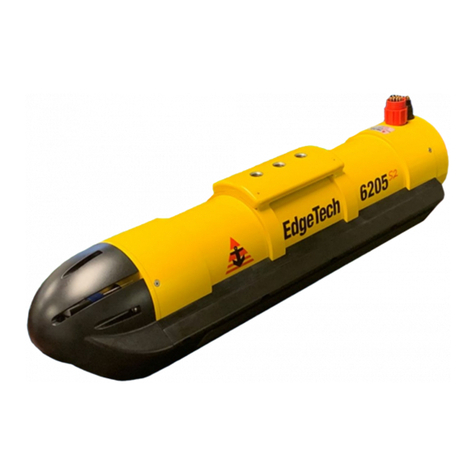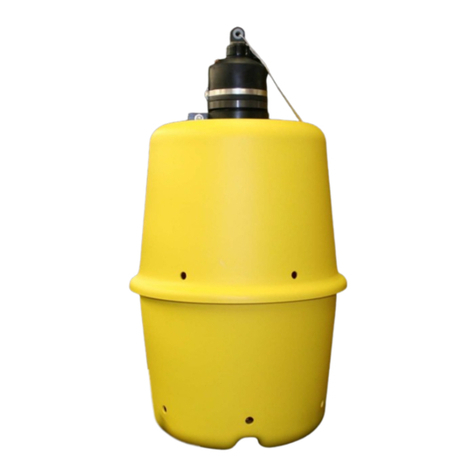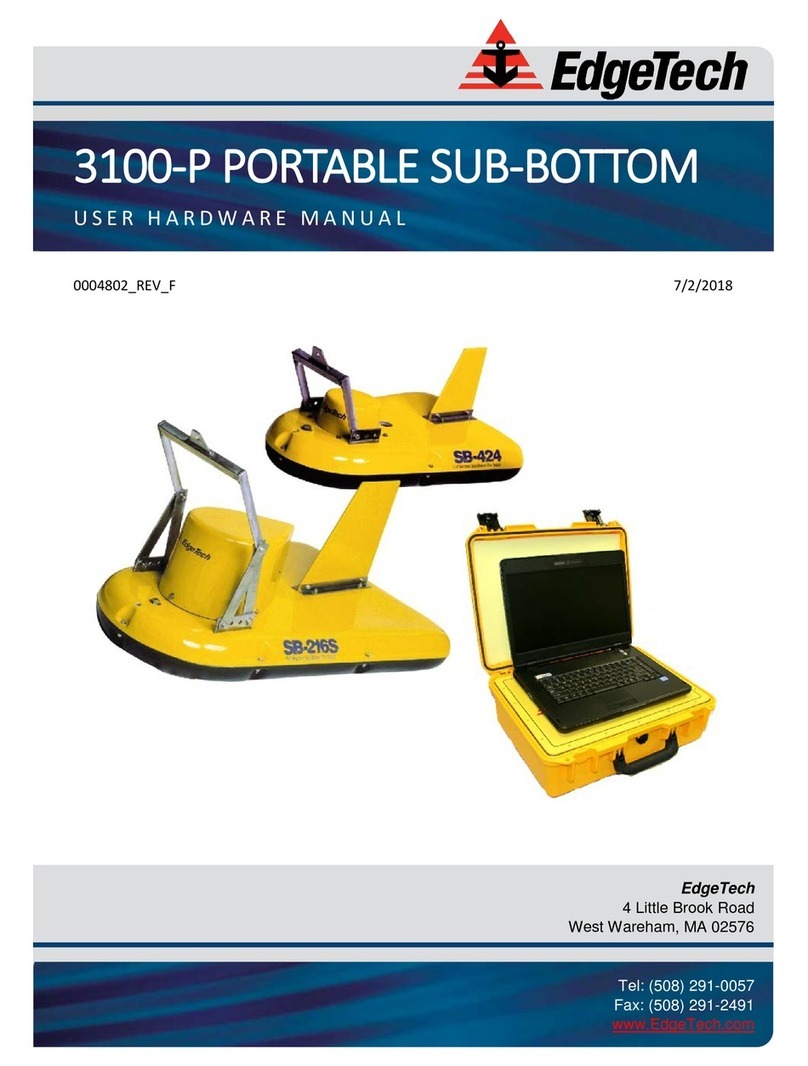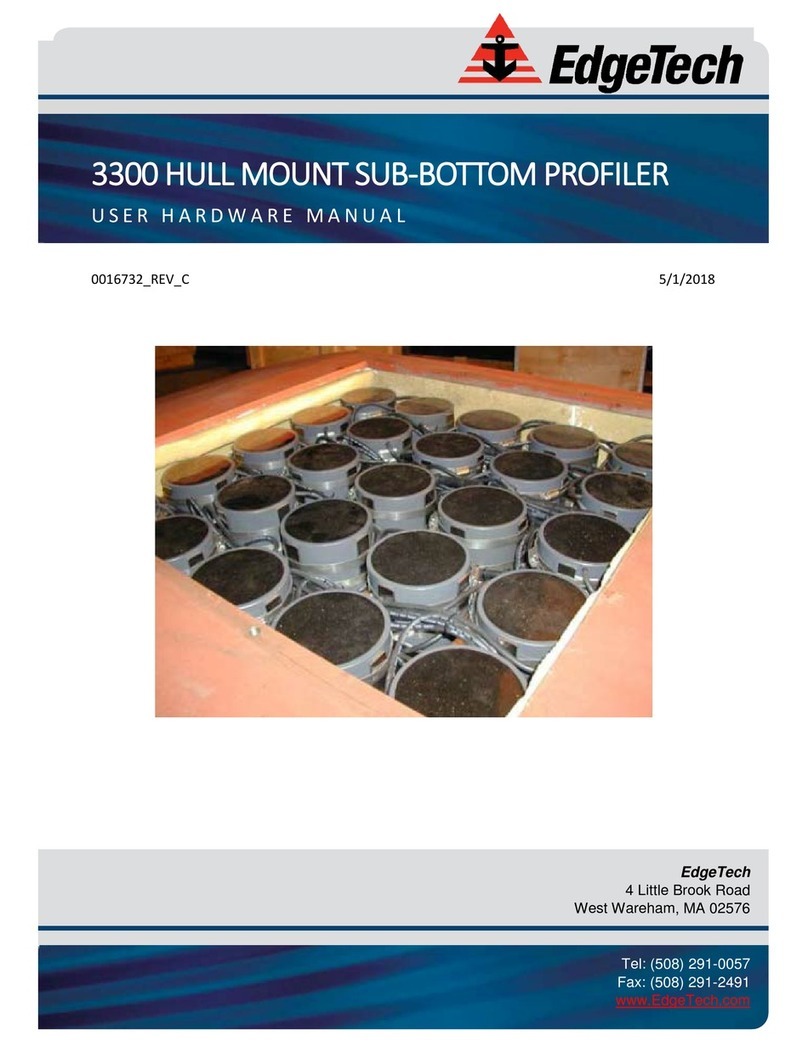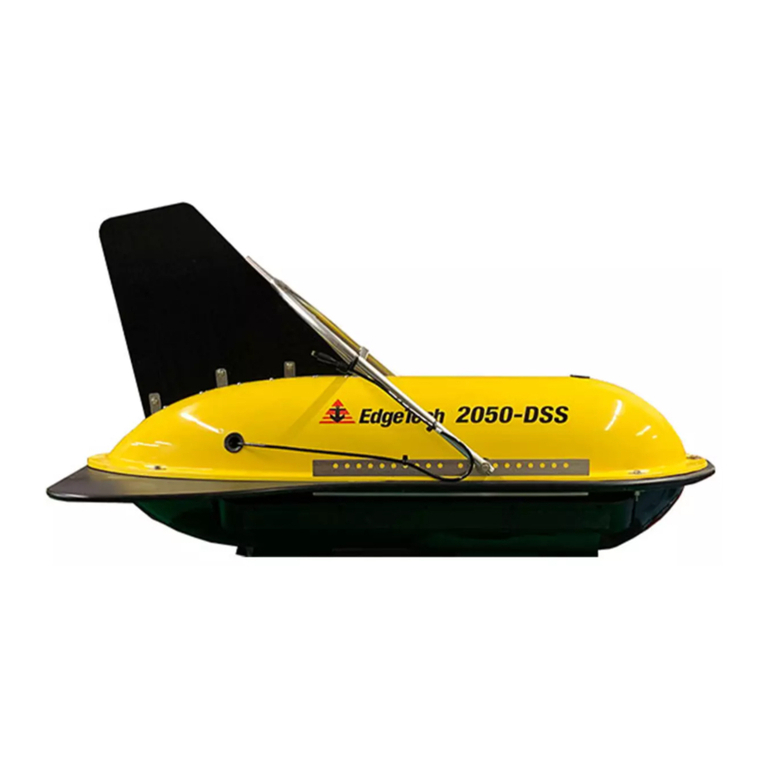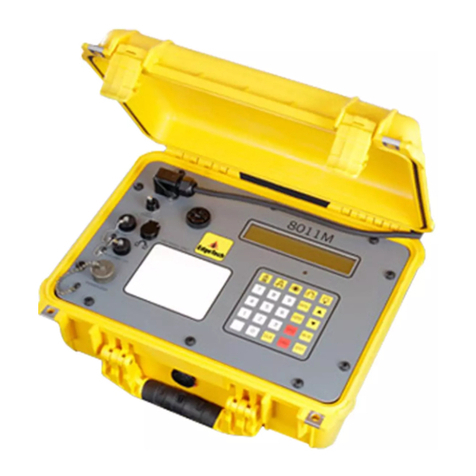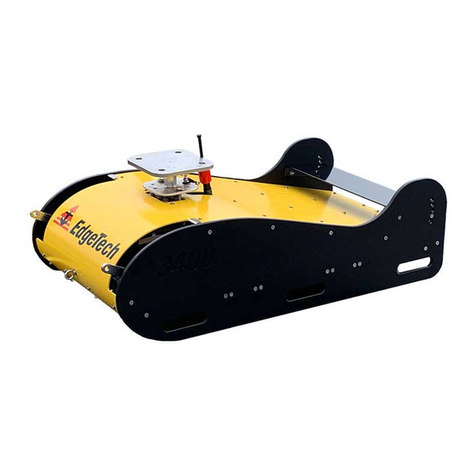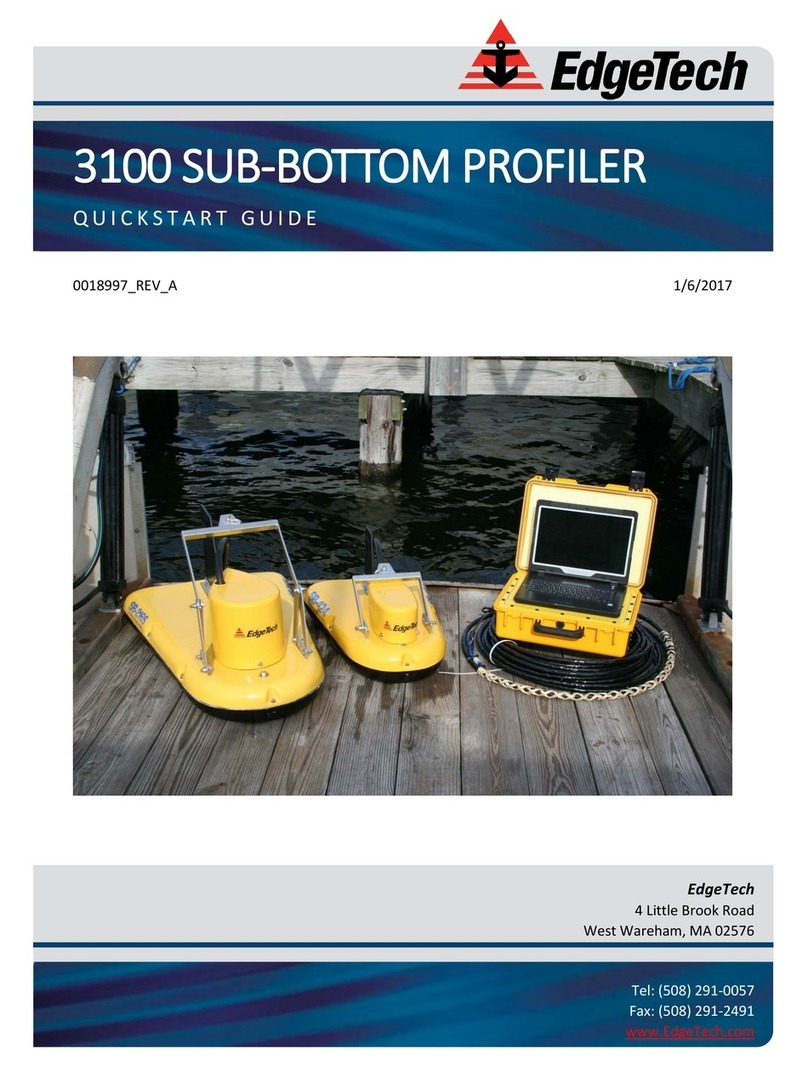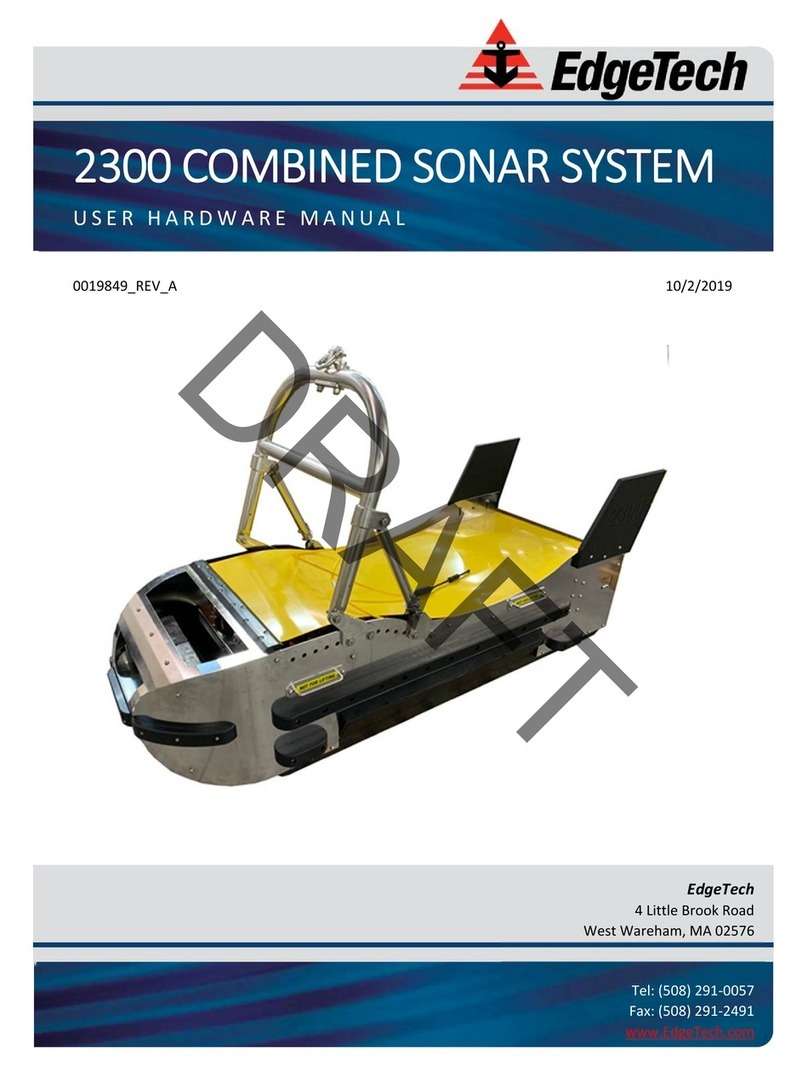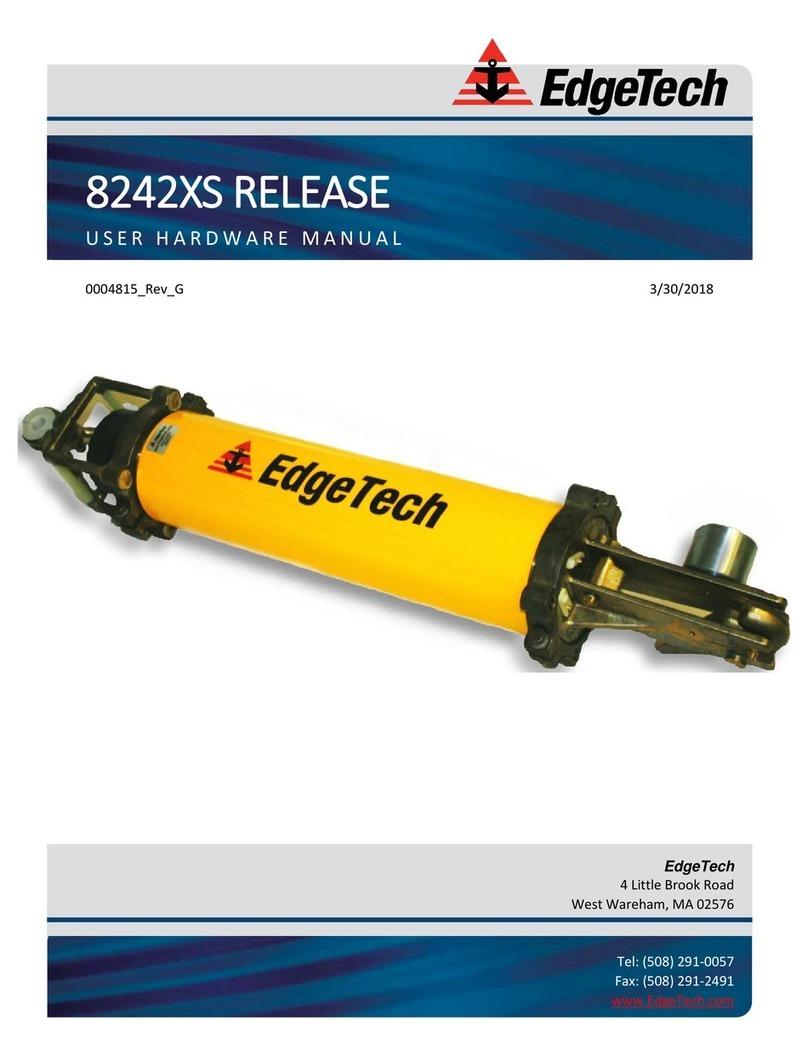
Advantages of Full Spectrum Chirp Technology 1-3
1.2.4 High Resolution
Signals received at the surface from the hydrophone arrays in the tow vehicle pass through
a software controlled programmable gain amplifier before being digitized with a 16-bit
analog-to-digital (A/D) converter at a sampling rate of 20, 25, 40, or 50 kHz The FM pulse is
then compressed using a digital compression filter. This correlation process is implemented
in real time with forward and inverse Fast Fourier Transforms. The compressed pulse has a
time duration approximately equal to the inverse of the bandwidth of the FM pulse which
results in a high temporal resolution. This high resolution enables the measurement of fine
layering in the sediment, an important factor in sediment classification because it provides
a more realistic picture of the true geologic variability of the sea floor and an accurate
determination of the depositional processes.
1.2.5 Additional Processing Gain
In addition to the resolution improvement, correlation processing achieves a signal
processing gain over the background noise. This gain is approximately ten times the log of
the time-bandwidth product. This improvement is due to the signal having a time duration
longer than the inverse of the bandwidth, thus increasing signal energy without increasing
the power of the outgoing pulse. To equal the typical performance of the full spectrum
sonar pulse, conventional pulse sonar would have to operate at a peak pulse power of
100 times greater than a full spectrum pulse with a time-bandwidth product of 100.
1.2.6 Gaussian Shaped Amplitude Spectrum Outgoing Pulse
Another important feature of Full Spectrum chirp technology is that the signal processing
optimizes the performance of the system. The sonar contains many components, each with
a unique dynamic range and linearity characteristic which are frequency dependent. In
addition to this characteristic, the amplitude spectrum of the outgoing pulse is chosen to be
approximately Gaussian in shape to limit the side lobe level and temporal resolution losses
due to attenuation. As a wavelet with a Gaussian shaped spectrum is attenuated by the
sediment, energy is lost but its bandwidth is nearly preserved. Therefore even after being
attenuated by sand, the acoustic pulse has approximately the same resolution as an
unattenuated pulse.
1.2.7 Reduction of Side Lobes
Use of Full Spectrum chirp technology reduces the side lobes in the effective transducer
aperture. The wide bandwidth of the sweep frequency has the effect of smearing the side
lobes of the transducer and thus achieving a beam pattern with virtually no side lobes. The
effective spatial beam width obtained after processing a full spectrum 2–10 kHz signal, for
example is 20 degrees measured at the -3db points.



